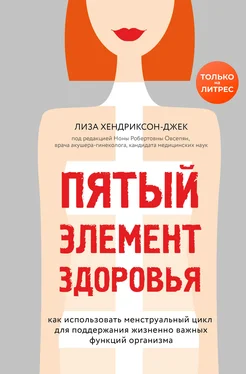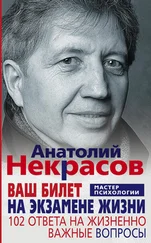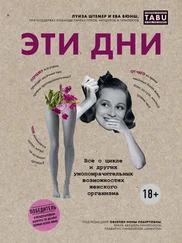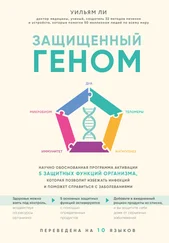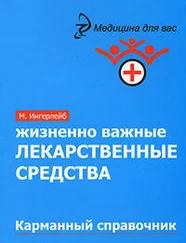7. Fehring, Richard J., Mary Schneider, and Kathleen Raviele. “Variability in the phases of the menstrual cycle.” Journal of Obstetric, Gynecologic, & Neonatal Nursing 35, no. 3 (2006): 376–377.
8. Price, D.C., E.M. Forsyth, S.H. Cohn, and E.P. Cronkite. “The study of menstrual and other blood loss, and consequent iron deficiency, by Fe59 whole-body counting.” Canadian Medical Association Journal 90, no. 2 (1964): 51; Fraser, Ian S., H.O.D. Critchley, M.G. Munro, and M. Broder. “Can we achieve international agreement on terminologies and definitions used to describe abnormalities of menstrual bleeding?” Human Reproduction 22, no. 3 (2007): 635–643; Dasharathy, Sonya S., Sunni L. Mumford, Anna Z. Pollack, Neil J. Perkins, Donald R. Mattison, Jean Wactawski-Wende, and Enrique F. Schisterman. “Menstrual bleeding patterns among regularly menstruating women.” American Journal of Epidemiology 175, no. 6 (2012): 536–545; Hallberg, Leif, Ann-Marie Hôgdahl, Lennart Nilsson, and Göran Rybo. “Menstrual blood loss – a population study.” Acta Obstetricia et Gynecologica Scandinavica 45, no. 3 (1966): 320–351; Hallberg, Leif, Ann-Marie Högdahl, Lennart Nilsson, and Göran Rybo. “Menstrual blood loss and iron deficiency.” Acta Medica Scandinavica 180, no. 5 (1966): 639–650.
9. Hallberg, Leif, and Lennart Nilsson. “Constancy of individual menstrual blood loss.” Acta Obstetricia et Gynecologica Scandinavica 43, no. 4 (1964): 352–359; Cheong, Revelita L., Miriam D. Kuizon, and Rosario T. Tajaon. “Menstrual blood loss and iron nutrition in Filipino women.” The Southeast Asian Journal of Tropical Medicine and Public Health 22, no. 4 (1991): 595–604; Dasharathy, Sonya S., Sunni L. Mumford, Anna Z. Pollack, Neil J. Perkins, Donald R. Mattison, Jean Wactawski-Wende, and Enrique F. Schisterman. “Menstrual bleeding patterns among regularly menstruating women.” American Journal of Epidemiology 175, no. 6 (2012): 536–545; Barer, Adelaide P., and W.M. Fowler. “The blood loss during normal menstruation.” American Journal of Obstetrics and Gynecology 31, no. 6 (1936): 979–986; Price, D.C., E.M. Forsyth, S.H. Cohn, and E.P. Cronkite. “The study of menstrual and other blood loss, and consequent iron deficiency, by Fe59 whole-body counting.” Canadian Medical Association Journal 90, no. 2 (1964): 51; Chen, Bertha H., and Linda C. Giudice. “Dysfunctional uterine bleeding.” Western Journal of Medicine 169, no. 5 (1998): 280.
10. Fraser, Ian S., H.O.D. Critchley, M.G. Munro, and M. Broder. “Can we achieve international agreement on terminologies and definitions used to describe abnormalities of menstrual bleeding?” Human Reproduction 22, no. 3 (2007): 635–643.
11. Kovacs, Peter, S.Z. Matyas, K. Boda, and S.G. Kaali. “The effect of endometrial thickness on IVF/ICSI outcome.” Human Reproduction 18, no. 11 (2003): 2337–2341; Israel, Robert, John D. Isaacs, Carla S. Wells, Daniel B. Williams, Randall R. Odem, Michael J. Gast, and Ronald C. Strickler. “Endometrial thickness is a valid monitoring parameter in cycles of ovulation induction with menotropins alone.” Fertility and Sterility 65, no. 2 (1996): 262–266; Alborzi, S., M. Momtahan, J. Zolghadri, and M.E. Parsanezhad. “The effect of endometrial pattern and thickness on pregnancy rate in controlled ovarian hyperstimulation-intrauterine insemination.” Medical Journal of the Islamic Republic of Iran (MJIRI) 19, no. 3 (2005): 189–193; Oliveira, J.B.A., R.L.R. Baruffi, A.L. Mauri, C.G. Petersen, M.C. Borges, and J.G. Franco. “Endometrial ultrasonography as a predictor of pregnancy in an in-vitro fertilization programme after ovarian stimulation and gonadotrophin-releasing hormone and gonadotrophins.” Human Reproduction 12, no. 11 (1997): 2515–2518; Dickey, Richard P., Terry T. Olar, Steven N. Taylor, David N. Curole, and Ellen M. Matulich. “Relationship of endometrial thickness and pattern to fecundity in ovulation induction cycles: effect of clomiphene citrate alone and with human menopausal gonadotropin.” Fertility and Sterility 59, no. 4 (1993): 756–760; Habibzadeh, Victoria, Sayed Noureddin Nematolahi Mahani and Hadiss Kamyab. “The correlation of factors affecting the endometrial thickness with pregnancy outcome in the IUI cycles.” Iranian Journal of Reproductive Medicine 9, no. 1 (2011): 41.
12. Dickey, Richard P., Terry T. Olar, Steven N. Taylor, David N. Curole, and Ellen M. Matulich. “Relationship of endometrial thickness and pattern to fecundity in ovulation induction cycles: effect of clomiphene citrate alone and with human menopausal gonadotropin.” Fertility and Sterility 59, no. 4 (1993): 756–760; Israel, Robert, John D. Isaacs, Carla S. Wells, Daniel B. Williams, Randall R. Odem, Michael J. Gast, and Ronald C. Strickler. “Endometrial thickness is a valid monitoring parameter in cycles of ovulation induction with menotropins alone.” Fertility and Sterility 65, no. 2 (1996): 262–266; Alborzi, S., M. Momtahan, J. Zolghadri, and M.E. Parsanezhad. “The effect of endometrial pattern and thickness on pregnancy rate in controlled ovarian hyperstimulation-intrauterine insemination.” Medical Journal of the Islamic Republic of Iran (MJIRI) 19, no. 3 (2005): 191; Oliveira, J.B.A., R.L.R. Baruffi, A.L. Mauri, C.G. Petersen, M.C. Borges, and J.G. Franco. “Endometrial ultrasonography as a predictor of pregnancy in an in-vitro fertilization programme after ovarian stimulation and gonadotrophin-releasing hormone and gonadotrophins.” Human Reproduction 12, no. 11 (1997): 2517; Habibzadeh, Victoria, Sayed Noureddin Nematolahi Mahani, and Hadiss Kamyab. “The correlation of factors affecting the endometrial thickness with pregnancy outcome in the IUI cycles.” Iranian Journal of Reproductive Medicine 9, no. 1 (2011): 45.
13. Dickey, Richard P., Terry T. Olar, Steven N. Taylor, David N. Curole, and Ellen M. Matulich. “Relationship of endometrial thickness and pattern to fecundity in ovulation induction cycles: effect of clomiphene citrate alone and with human menopausal gonadotropin.” Fertility and Sterility 59, no. 4 (1993): 756–760.
14. Kovacs, Peter, S.Z. Matyas, K. Boda, and S.G. Kaali. “The effect of endometrial thickness on IVF/ICSI outcome.” Human Reproduction 18, no. 11 (2003): 2339.
15. Chen, Bertha H., and Linda C. Giudice. “Dysfunctional uterine bleeding.” Western Journal of Medicine 169, no. 5 (1998): 280–284.
16. Livingstone, Mark, and Ian S. Fraser. “Mechanisms of abnormal uterine bleeding.” Human Reproduction Update 8, no. 1 (2002): 60–67.
17. Там же, 61.
18. Silberzweig, James E., Daniel K. Powell, Alan H. Matsumoto, and James B. Spies. “Management of uterine fibroids: a focus on uterine-sparing interventional techniques.” Radiology 280, no. 3 (2016): 675–692; Donnez, Jacques, and Marie-Madeleine Dolmans. “Uterine fibroid management: from the present to the future.” Human Reproduction Update 22, no. 6 (2016): 665–686.
19. Munro, Malcolm G., Hilary O.D. Critchley, Michael S. Broder, Ian S. Fraser, and FIGO Working Group on Menstrual Disorders. “FIGO classification system (PALM-COEIN) for causes of abnormal uterine bleeding in nongravid women of reproductive age.” International Journal of Gynecology & Obstetrics 113, no. 1 (2011): 3–13; Chen, Bertha H., and Linda C. Giudice. “Dysfunctional uterine bleeding.” Western Journal of Medicine 169, no. 5 (1998): 280–284.
20. Peric, H., and I. S. Fraser. “The symptomatology of adenomyosis.” Best Practice & Research: Clinical Obstetrics & Gynaecology 20, no. 4 (2006): 547–555; Livingstone, Mark, and Ian S. Fraser. “Mechanisms of abnormal uterine bleeding.” Human Reproduction Update 8, no. 1 (2002): 62.
21. Beebeejaun, Yusuf, and Rajesh Varma. “Heavy menstrual flow: current and future trends in management.” Reviews in Obstetrics & Gynecology 6 (2013): 155–164.
Читать дальше
Конец ознакомительного отрывка
Купить книгу
